The Article
6000A Integrated Amplifier From Audiolab
1st July 2019
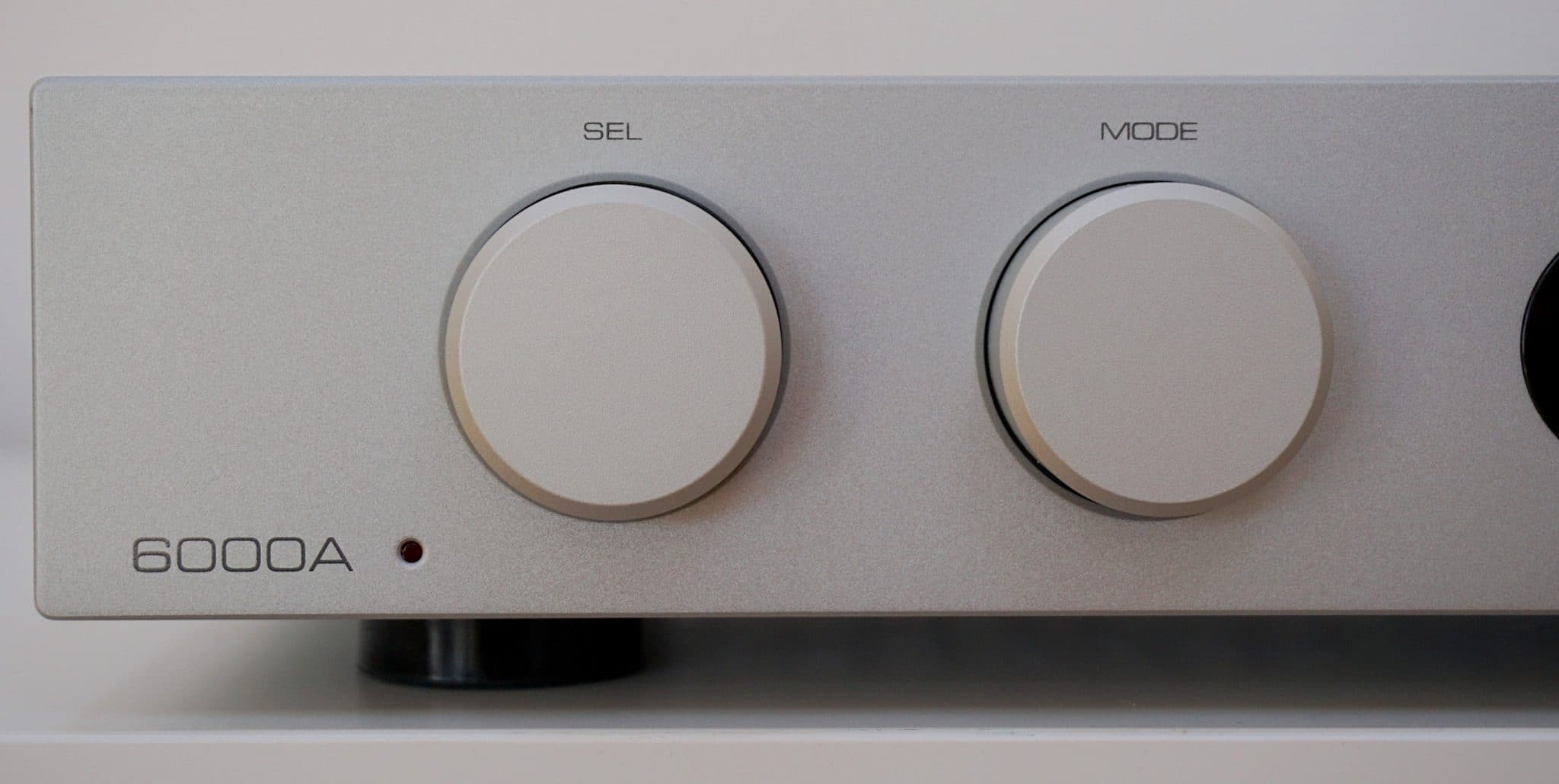
Adopting a traditional and solid form factor on the outside, Paul Rigby realises that the magic is occurring under the lid
The thing about the 6000A, when the aesthetics are considered, is that it looks like an integrated amplifier. Don’t dismiss that point. It’s actually critical to target sales. I say again, the 6000A looks like a traditional integrated amplifier. It looks safe. It looks steady and solid. It doesn’t try anything fancy. You would never accuse the chassis of ever emerging from an Italian design studio. There’s no chic fashion sense with this one. If you saw this box in the 80s, it would look rather racy, that’s for sure, but it wouldn’t look too out of place.
For some users, that is all they want. And that’s important. Weird and even slightly off-kilter designs can scare and make certain hi-fi fans feel uncomfortable. Even slightly conservative half-width amplifiers can be an issue for some.
The 6000A – at least on the outside – is the Mother’s Pride processed white loaf of amplifier design. You can see it for what it is at 30 paces. Again, I’m not damning this amp with faint praise when I say that. That’s not a bad thing. It’s a firm design choice.
Before I began the review of this box, I was comforted to know that the designer of the 6000A was also the same designer of the older 8300A. Jan Ertner took the basis of the latter to create the former which meant that hard won knowledge was now being refined and improved upon. There’s nothing worse than a single line of products that feature a host of designers who not only constantly reinvent the wheel but often make the same old mistakes over and over again (it’s happened many times in the past). Not here. So I already had a sense of confidence going into this one.
This is an amplifier but it features other components too. The ES9018 Sabre32 Reference DAC is one of those, featuring 32bit HyperStream architecture and Time Domain Jitter Eliminator. Again, this chip is not a foreign component. You’ll find it in the company’s M-DAC. Continuity again.
Connected to the DAC are the 6000A’s four digital inputs – two coaxial and two optical – which handle 24bit/192kHz. Tagged to these are user-selectable digital filters: Fast Roll-Off, Slow Roll-Off and Minimum Phase. I’ll say now that I normally hate these sort of things. Anything that takes me away from a pure, default, flat signal is an experience as near to abhorrent as I’m likely to find. That said, I’ll give them all a test in due course.
Streaming is also possible via Bluetooth (plus the now usual aptX codec).
A Class AB amplifier, that can also be used as a pre-amp and as a power amplifier too, the integrated mode of the design pumps out 50W per channel into 8 Ohms, the output stage of the discrete power amp circuits uses a CFB (Complementary Feedback) topology plus a meaty 200VA toroidal transformer followed by four 15000uF reservoir capacity (60000uF in total). The idea is to reduce the strain upon the amplifier and to maintain a sort of backup of power, ready to use.
Audiolab has included a phono stage for moving magnet phono cartridges – a JFET-based circuit with RIAA equalisation. A dedicated headphone amp with current-feedback circuitry is also included.
Spanning 445 x 65.5 x 300mm and weighing 7.8kg, the 6000A is available in a choice of silver or black.
SOUND QUALITY
I started with Mike Oldfield and his Platinum (Virgin) LP from 1979. I played Into the Wonderland, featuring vocals by Wendy Roberts. A sweet, beautifully melodic and slightly melancholic, low key ballad with a high-energy, rocking finish.
I suppose, if I were to describe the 6000A in one word, it would be confident. This amplifier is not shy, it doesn’t try to hide any aspect of its sound envelope. The 6000A will never die wondering. That is, the 6000A gives its all in the cause of making you happy.
The overall presentation from the Audiolab 6000A was balanced and balanced means you get to hear some bass. This is not always the case for mid-placed budget equipment. Bass is often sacrificed or at least trimmed to some extent. Even the best sub-£1,000 amplifiers out there love to trim bass. It’s a cost issue. That doesn’t happen with the 6000A.
The 6000A allows bass into the soundstage. That means that both the percussion and bass guitar were not only able to ground the music and stop it flapping in the wind but also offer a solid, rhythmic pace to the whole arrangement. That is, there was a sense of order here. The music flowed with an added, deeper groove. The structure was both solid and funky.
One of the persistent fears I have as a reviewer, from amplifiers designed at this price point, is frequency discipline. This is another reason that may sub-£1000 amplifiers are rather bass shy. Most of them can’t handle it. Too much of it, at any rate.
That is, there is a danger of allowing too much bass into the soundstage because it may create a warming feeling, leaking into the midrange and creating a sepia-like effect. Again, that never occurred with the 6000A. Frequency discipline was paramount so bass stayed put and never bloomed into the mids.
In fact, let’s pause for a moment here to dwell and emphasise this one feature. If I was going to pin one all-important factor for the success of the 6000A it would be tonal balance. In fact, you could ally tonal balance as being the killer feature of the 6000A. The headline. Tonal balance is the underlying strength of the 6000A. I really haven’t heard anything like it under £1,000.
The upper midrange was delightfully detailed and accurate although fragility and delicacy were not great priorities, I have to say. I never saw reverb tails of filigree lattice flowing from cymbal taps but this is a £599 amplifier we’re talking about here, not a £5,999 design. So no, don’t expect that but do expect to hear everything that a £599 amplifier can provide: complex and chaotic lead guitar with enough precision to make sense, wind instruments that feature a character and lightness of touch and a layered soundstage that revealed even shy instruments lurking at the rear of the mix.
Before I moved from vinyl, note that the built-in phono amplifier is a good one. An external model is better but the internal model will be fine for those of a budget. Buy an external model when you can, though.
I then turned to Bluetooth which I paired to my iPhone 8. Pairing is automatic. That is, you select Bluetooth as a source on the amplifier and the 6000A pops up on your Bluetooth screen on your phone. Painless and easy pairing. I played Marvin Gaye’s Mercy Mercy Me as a lossy file. Often, playing such a file in this way results in a bright and edgy play response but not here. The 6000A was able to calm any possible issues. So while the midrange was lacking insight, bass was hardly focused and treble was almost a non-entity, none of that was the 6000A’s fault. In fact, the 6000A made the best of a bad job, providing a perfectly listenable track without any nasty sonic responses. What I liked about the 6000A’s take on Bluetooth was the creation of a wide soundstage and, because lots of space was now on offer, the instrumental separation that also followed. Allowing each instrument within the mix to be presented on its own, adding to the complexity of the presentation.
Next up, I plugged in my Astell&Kern AK120 into the rear-mounted optical port and played Dire Straits’ So Far Away from their Brothers in Arms album. I liked the way the 6000A handled this 24bit/88.2kHz track because the track was mastered with excessive peak limiting creating a compressed sound. The low noise aspect of the 6000A, the balanced and controlling nature of the upper frequencies and the solid bass foundation allowed this track to be broadcast in a mature and stable fashion. To such an extent that the compressed element was no longer a real issue.
Playing the restful piano tinklings of Erik Satie at the same resolution was a relaxing and enjoyable experience. The potentially chaotic resonance of the piano was handled well by the 6000A in terms of control while the nuanced nature of the keys and pedals from the Satie piano was transcribed with both ease and insight to give the performance a sense of delicacy alongside that sense of authority.
I then took a quick listen at the range of DAC-related filters available within the unit. In the 6000A’s manual, the Phase filter is talked about as if the resultant sound resembled analogue but I had to disagree. The presentation emerged from cotton wool, sounding overly damped with a lack of precision and midrange insight.
The Slow filter reduced that effect dramatically while Fast was a default flat response. I hold my hands up here. I had to eat my words with these filters because my preference leaned towards the Slow filter which I actually found superior to Fast. The latter is supposed to be default and flat but I found Fast to be a touch edgy.
So, thumbs up to Audiolab. I never thought I would actually hear a usable filter on any piece of hi-fi equipment but, blow me down, Audiolab has created the very thing.
One important thing. Critical if you’re sound testing the 6000A and the DAC is significant to you. Make sure you properly review the amplifier with each and every filter. Cycle through each in turn and give each one time. Punching in any one of these filters will change the inherent character of the 6000A’s DAC. For example, if you talked to me about the 6000A having only listened to the Fast filter and I replied to you having only listened to the Slow filter, we’d effectively be talking about two different amps.
Hence, don’t judge the 6000A until you’ve heard all three filters. Listen to your Uncle Paul on this one.
Finally, I plugged in my reference headphones to listen to Satie via the internal headphone amplifier. While there may have been a limit on midrange extension, within the confines of the head amp’s performance envelope, the sound was admirable indeed offering plenty of refined detail on offer plus light and shade to add interest.
CONCLUSION
I listened to this amplifier for some time and realised that the basic presentation was supremely balanced in terms of how it delivered music to the ear. Some hi-fi components do one thing very well and if you’re looking at a budget component that can often be a fascinating experience because build budgets often preclude a generally good performance. The 6000A is one of those pieces of kit that does its best to do everything very well indeed.
Of course, it can’t. Not really. Money won’t let it. That doesn’t stop to trying, though.
In terms of ‘can’t’, what the 6000A doesn’t give you an extended dynamic reach. That high ceiling that higher-end amplifiers provide to allow the upper midrange to soar.
Now, some amplifiers in this price range will give you that. But then they will fall over very badly in other areas because too much emphasis has been placed upon that soaring thing for the build budget limits. So, for example, you may come across an amplifier that offers great midrange extension but the bass will be lacking. In other words, you go too far in one direction? You pay for it in another.
The 6000A doesn’t do that either. It never actually falls down. It never leaves you feeling, “Wow, it does this and this amazingly well but I wish it didn’t do that…” You won’t give that response to a 6000A listening session.
In short, the 6000A provides the perfect balance of performance to a build budget. It’s the perfect compromise. Every part of the sound envelope has been looked at and enhanced to the point when the money ran out. Then Audiolab stopped at that point.
Hence the 6000A squeezes every last penny of performance from your £599. If the designers had been told that the price was £649, they would have improved everything a bit more. For £699? Everything would have been improved a bit more still. You see? The 6000A is even handed, offers great sound and is one of the best value amplifiers on the market. If you want to hear how your money has been spent, buy a 6000A.
Bottom line? The Audiolab 6000A is better than you think.
AUDIOLAB 6000A INTEGRATED AMPLIFIER
Price £599
Website: www.audiolab.co.uk
TO BUY CLICK BELOW:
USA – https://amzn.to/383xoR3
EUROPE – https://amzn.to/3mMazW8
GOOD: confident bass, instrumental separation, upper midrange detail, balanced output
BAD: nothing
RATING: 9
[Don’t forget to check out my Facebook Group, The Audiophile Man: Hi-Fi & Music here: www.facebook.com/groups/theaudiophileman for exclusive postings, exclusive editorial and more!]
REFERENCE
Pro-Ject RPM3 Turntable
Tellurium Q & QED cabling
Blue Horizon Professional Rack System
Harmonic Resolution Systems Noise Reduction Components
All vinyl was cleaned using an Audio Desk’s Ultrasonic Pro Vinyl Cleaner


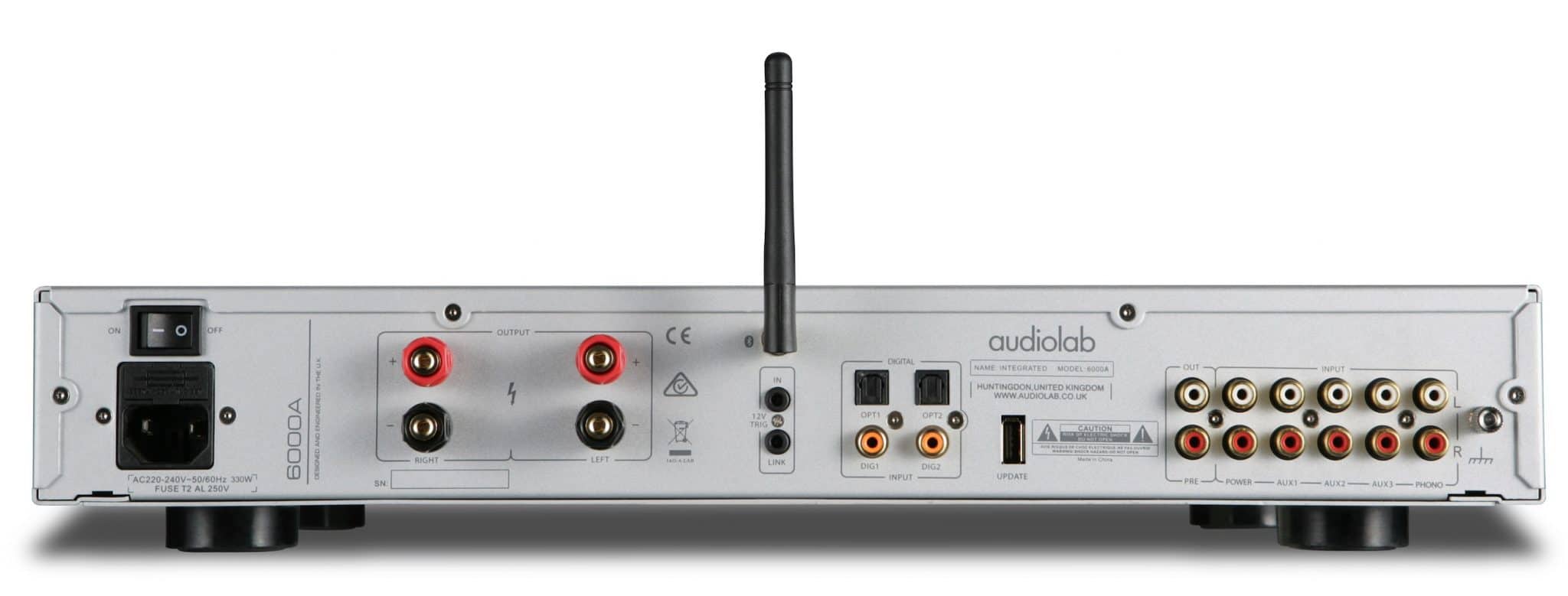
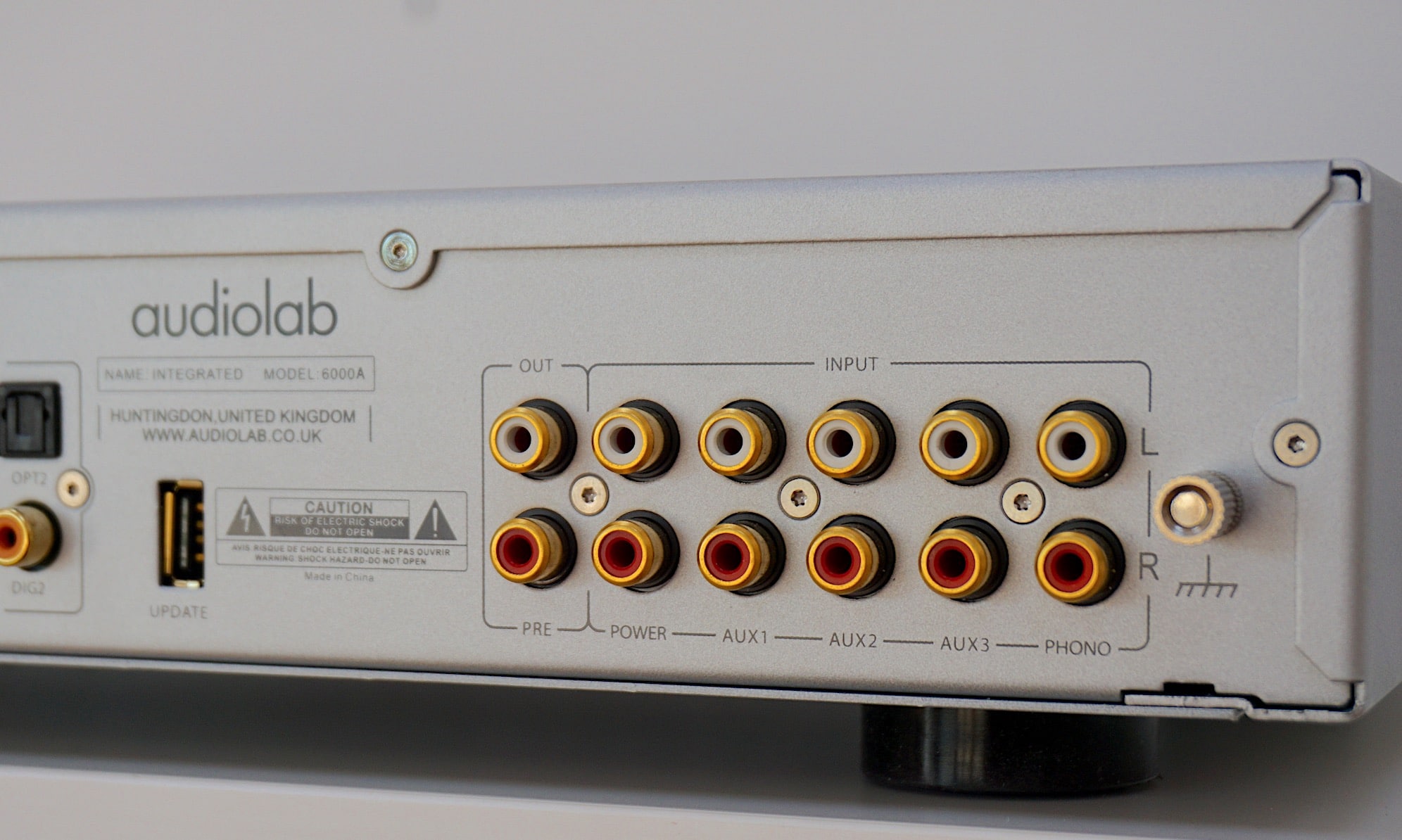
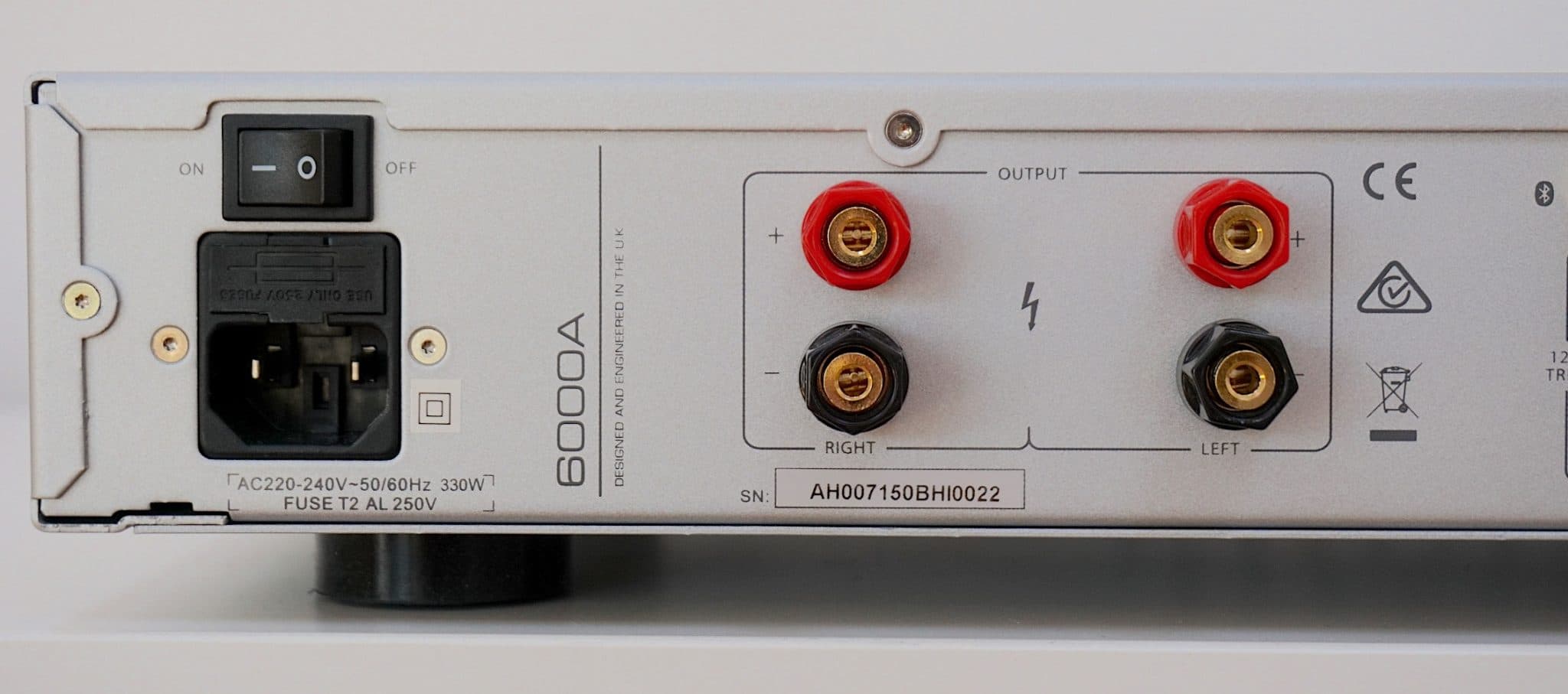
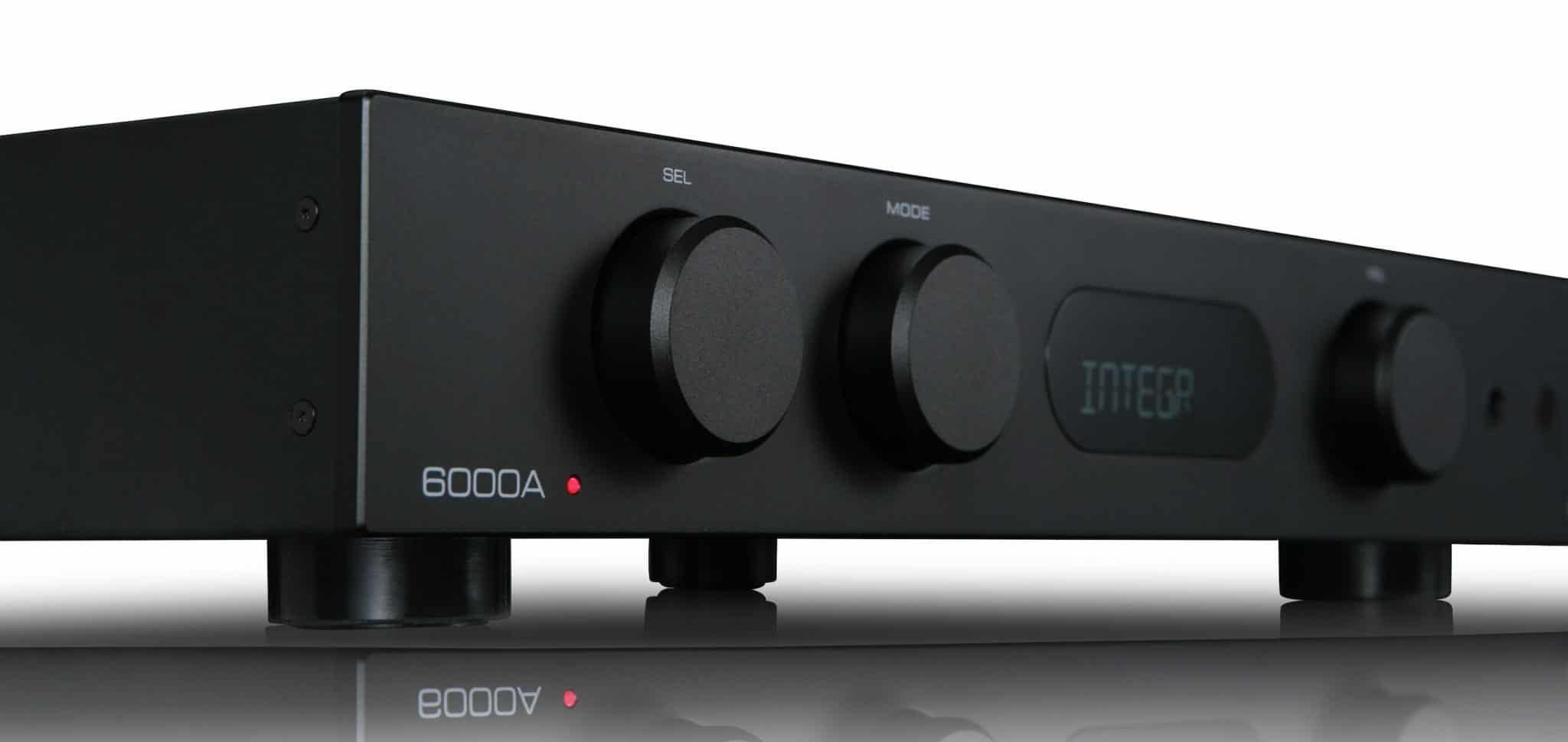
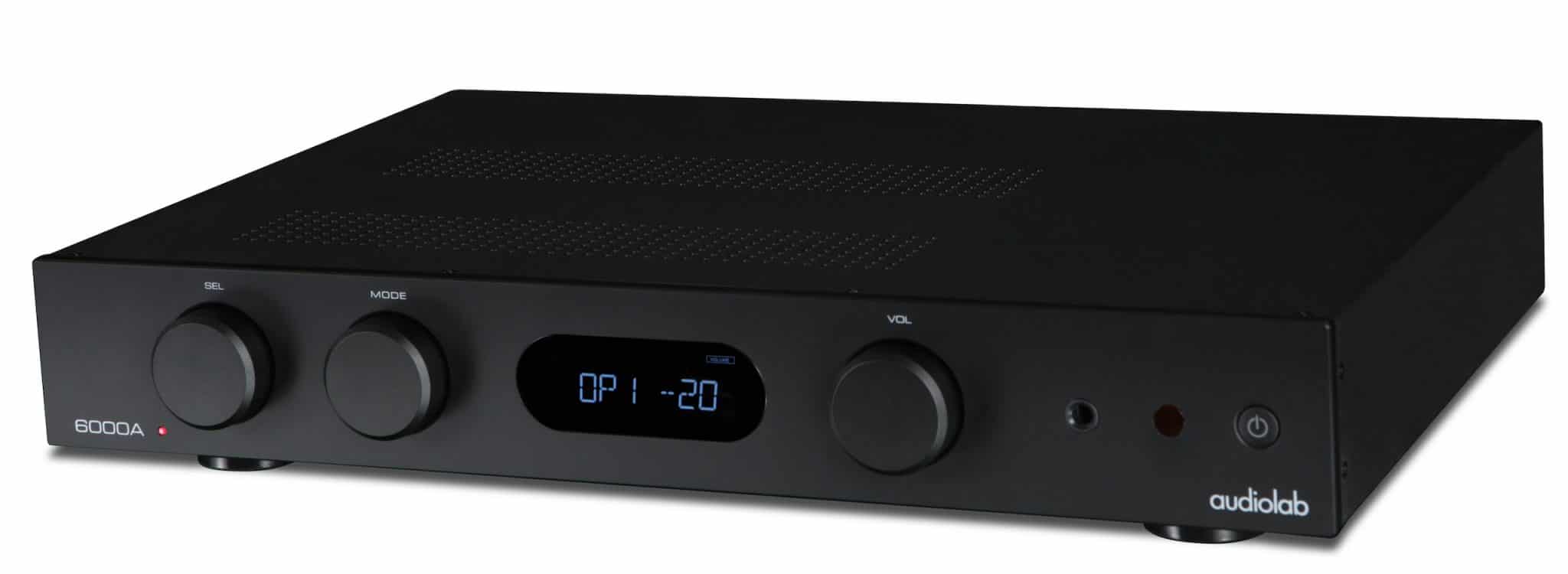
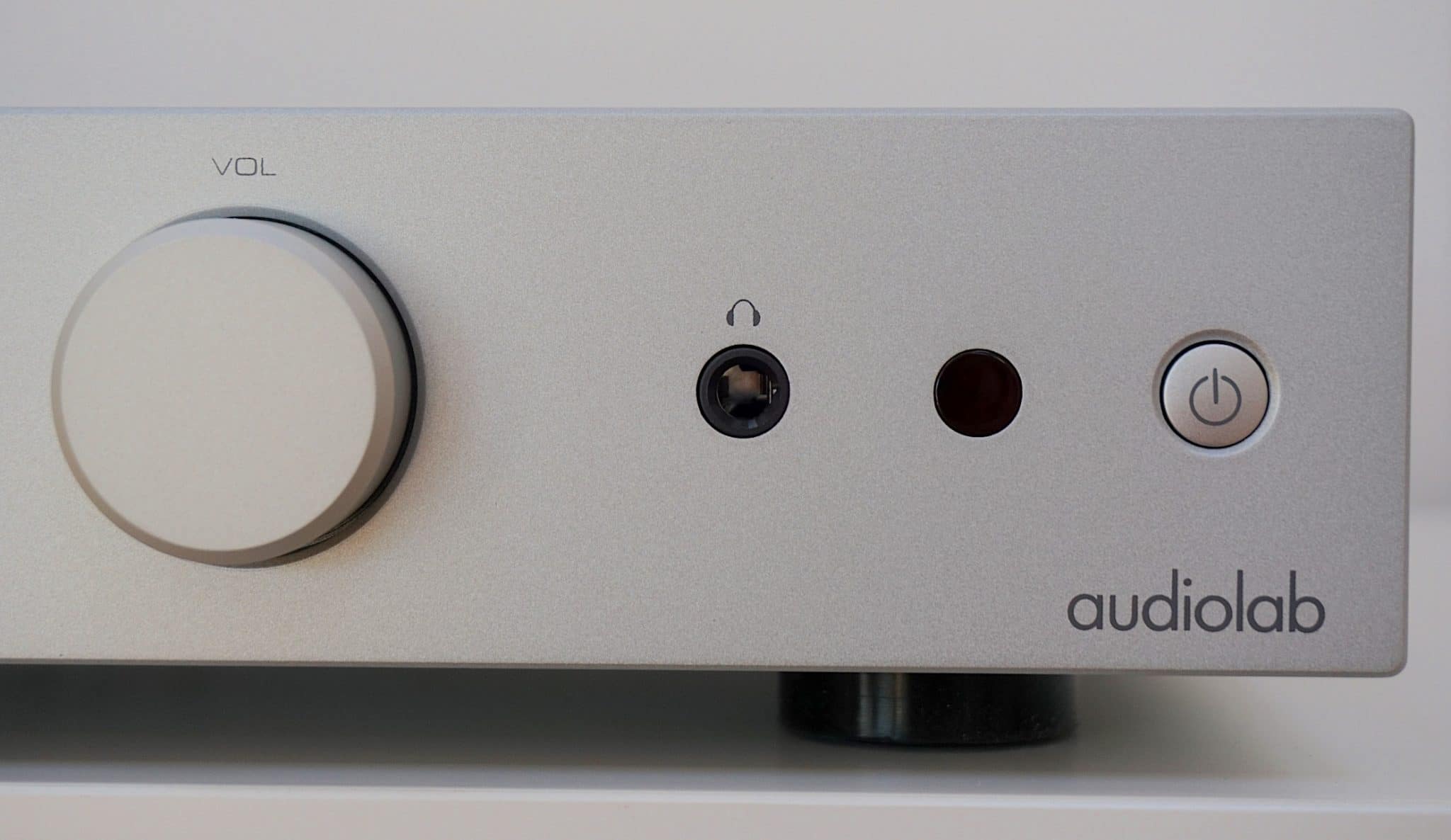
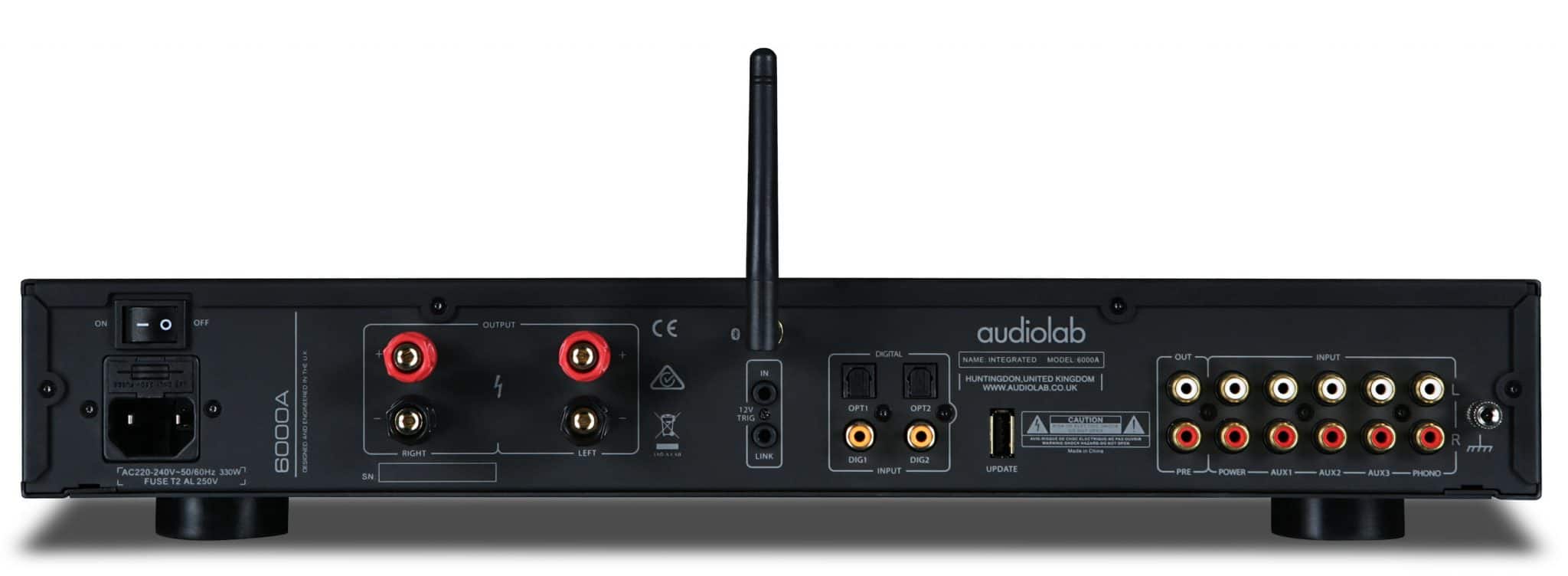

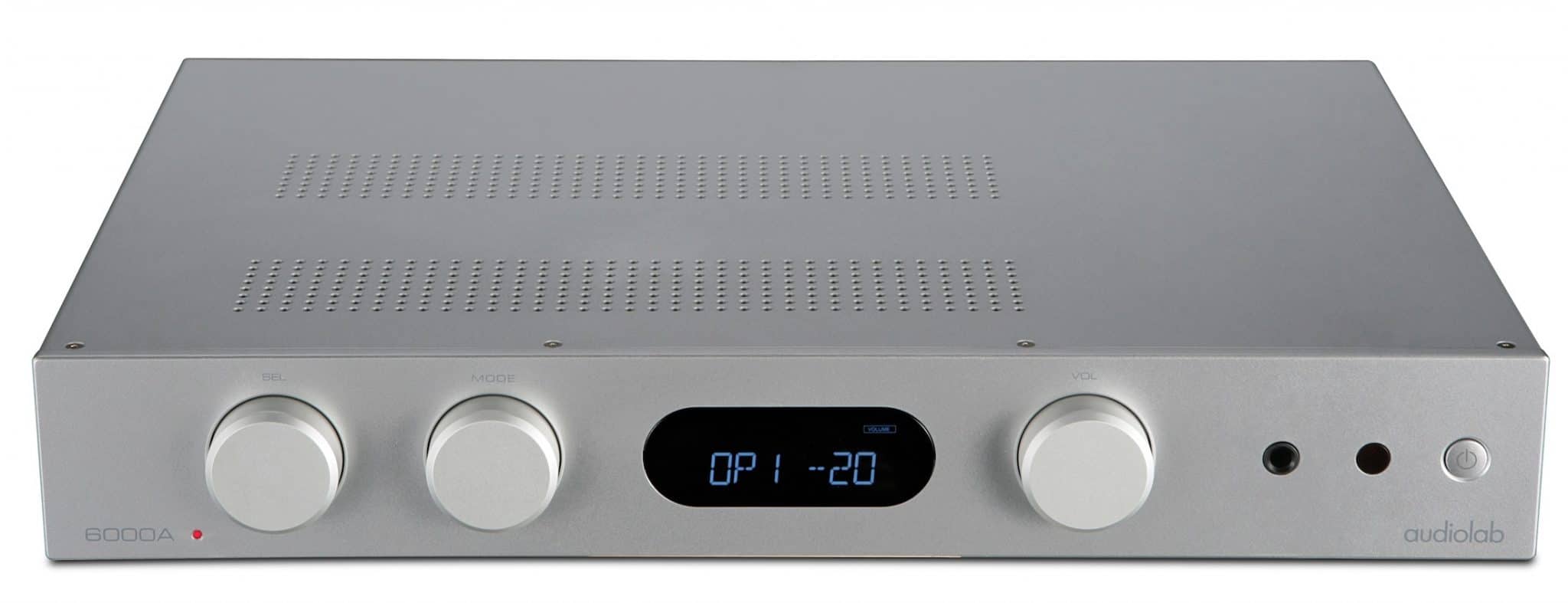
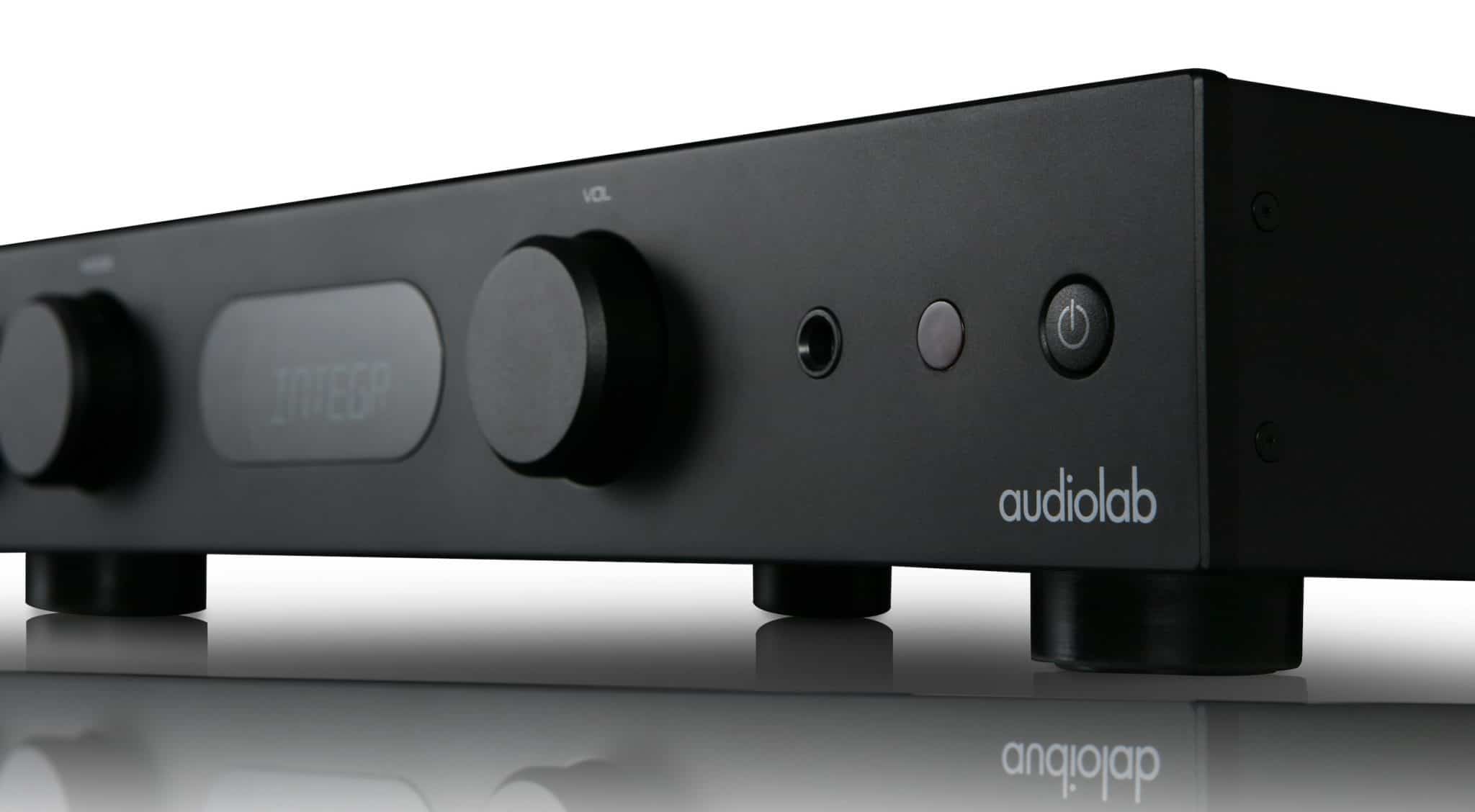
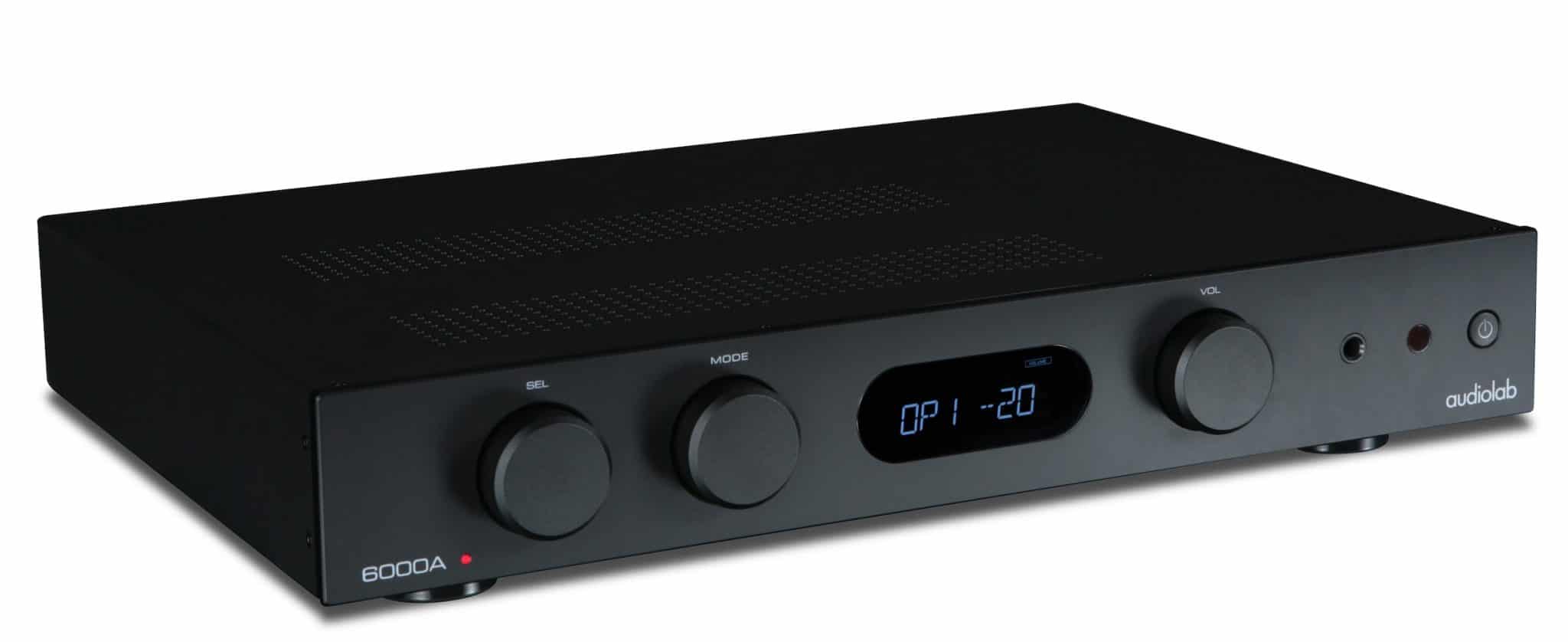



Speaking of DACs I’ve just treated myself to a Denafrips Ares II r2r ladder DAC and Wow, it’s a major upgrade, so much so I’m already wanting to hopefully try getting the Denafrips Pontus II,
Thank you Paul,
An advice for a transport streamer ?
Have a nice day
Dan
There are plenty of all-in-one systems out there that offer that sort CD player and streaming, but I’m not immediately familiar with a pure transport and streamer combo.
Thank you Paul
Hi Paul,
Is 720mv line input sensitivity an unusual number? I feel that most integrated amps are around 150-200mv. Had to switch my external preamp into high-gain to get real volume. Would there be a design/performance reason for Audiolab tuning it this way?
Let me ask Audiolab about that one, Tom. They should get my query on Monday with luck.
Hi Tom – this reply is from the actual designer at Audiolab, “When using an external preamp, I assume the 6000A is used via its Power-Input socket ‚Äì i.e. as a power amplifier?
Audiolab power amplifiers have for many years featured a fixed gain of 29dB (28 times) so that any two amps can be used for bi-amping. In case of the 50W/8ohm 6000A, that gives an input sensitivity of 720mV. 500mV – 1V is quite normal and having a higher output from the preamp and a lower power amp gain will ensure a better signal-to-noise ratio for the overall system.
“However, if this is referring to the line input (AUX) in Integrated mode, then the 720mV is with the volume control set to 0dB. There is, however, an additional 8dB of gain (max. volume= 8dB), so with the volume “flat out” the sensitivity would
be 287mV. We need a bit of clarification to make sure we are answering correctly.”
Blimey, thanks Paul.
The ‘preamp’ is an NJC phono stage, perhaps I should have specified that. Currently it’s connected to an AUX line input in integrated mode. I hadn’t considered running it as an actual preamp and using Power mode on the Audiolab. My previous Onkyo A-9010 had a 150mV input sensitivity and I could easily run the phono stage in low-gain, so I was curious as to why there might be such a difference in input sensitivity between integrated amps.
The NJC manufacturer said a cartridge with 5.5-6.5mV output would get me to around 720mV in high-gain, so it just narrows down the options a bit.
Thanks again for getting that response from the designer.
Hi, Great review. I would like to know how does it compare in term of sound between Audiolab 6000A and Musical Fidelity M2si.
Hi Aizat – I haven’t been able to compare the two, I’m afraid although I’ve heard good things from those who have heard the M2si. Given the option, I would choose the 6000A but I’m sure you won’t be disappointed if you can get a good deal on the M2si.
Hi Paul,
I currently have a marantz pm8006 which is 70 watts @ 8ohms and they don’t seem to control my mission QX5 speakers well. Now have to buy a new amp, will the audiolab 6000a be a good match? Do you think it will drive the missions efficiently?
There may be other things happening in your hifi system that I’m not privy to but – looking at the evidence in front of me here – yes, the 6000A will do a better job.
Thanks for the reply. As i only have digital audio files (normal flacs) the marantz is connected to a schiit modi 2 uber dac and sometimes dragonfly red, both via PC. Is my source lacking? will upgrading to a more expensive dac be a good solution or do i go for the 6000a or look for a even more powerful amp as the mission QX5 are power hungry speakers.
Hi BK – the weak link is your PC. PCs are great things in themselves. Wonderful jacks of all trades machines, of course and obviously a key part to a desktop set up. Problem is, they are full of high-frequency noise because they are not dedicated music makers. They do a million and one things every second. Such as OS house keeping. Your music output is but one of a host of the things your PC addresses.
Because a PC is a general workhorse, specialist sound-based shielding/isolation is minimal to none existent. Mainly because the PC doesn’t have to go to those lengths. That’s not its core mission, as it where. Great for desktop use but compromised for anything else. So, if you’re hearing issues – that’s why.
Depends on how serious you want to take this but if you do want to go that far in sound terms, bin the PC. Otherwise, you’ll need to live with some compromises.
Oh alright then, so all i need to do is buy a new dac?
Some dacs come with a USB input, should i avoid that too?
USB is fine, coax connections are great too. Running a hi-fi oriented source through a DAC, amp and speakers will up the sound quality. The source can be a CD transport to a DAC or a USB stick in a DAC or even a separate hard disk independently connected to a DAC, a phone/tablet streamed to a DAC. The options are endless. Just taking the PC out of the equation lowers noise. As I say, it depends on your set up and requirements. A desktop system is PC oriented and so the PC is central to that and that’s fine. But if sound is the only priority, then the former option is better.
Paul,
You seem to be suggesting that a phone/tablet streamed to a DAC is superior in audio quality to a laptop/computer streamed to a DAC. Does a phone/tablet not have the same limitations as a computer as far as being non-dedicated to audio?
Hi Gary – is this referring to my comments to BK? If so, I obviously didn’t explain myself properly. The idea, in BK’s case, is to get the PC out of the hi-fi chain (as long as he wanted to and as long as a desktop system was not the priority). Once done, then the resultant DAC-Amp-Speakers chain would be purer and lower in high-frequency noise while retaining a variety of source options.
I didn’t rate those source options but if I did then yes, plugging in a phone/laptop would offer a compromised source signal. But at least the option remains there. That’s why I included it. To show that variety remains, if you wish to later use it/them. A better source would be a CD transport, isolated hard disk (I emphasise isolated), wired Ethernet connection to the Internet and so on.
Good-morning Paul,
With the 6000a, which speaker do you recommend between BRONZE 50 SPEAKERS and 3030I SPEAKERS? Even though these are low budget speakers, do you think they’re worth it or do you think you need to save a bit of money to buy higher end speakers?
Thanks Paul
Dan
It depends on your budget, Dan but, of the two, the 3030i would be my choice.
Yes. I was referring to your answer to BK, where you say…Hi BK ‚Äì the weak link is your PC. You then say…Running a HI-FI ORIENTED SOURCE through a DAC, amp and speakers will up the sound quality. But then you go on to say the source can be a phone/tablet streamed to a DAC, which I can’t imagine being any better than a PC.
Otherwise, I’m in complete agreement with you, Paul.
In my reply, I didn’t mean to include phones, etc as hifi quality. If you think it read that way then apologies. Hopefully you understand what I getting at now 🙂
Thank you Paul,
So, do the 3030I SPEAKERS perform well with the Audiolab 6000a? In short, is it a good buy? Currently I have old JMLAB DB08, I wonder if the replacement by the 3030I SPEAKERS will be significant and positive. I don’t know if you can give me that information. Moreover, if I invest a hundred euros more, what would you advise me?
Thanks again Paul.
Dan
Hi Dan – yes, I’d say they are a good buy.
Hi Paul, I am new to your site, you seem to know quit a lot about the subject & I needed your expert advice on selecting between two integrated amps … AL6000A & PM7000N. My source is mostly Classic Vinyl … like Floyd, Knophler, Eric clapton, porcupine trees etc. I have a Maratz T5005 & plan to get a pair of W’daleLinten I liked every thing I have read about the AL6000A but not sure if It can get enough bass & soundstage out of the lintens. the specs of the PM7000N also looks good. just not able to decide which would pair better with the lintens.
Hi Vinod – I assume you mean the new Heritage speakers? The choice is down to your requirements. If a built-in streaming option is important, go for the Marantz (but also look at similar options available from Audiolab before you decide). If not? The 6000A is my option.
Hi Paul !
I am currently using Audiolab 8000s, see if the 6000a or even the 6000a play is a wise upgrade ?
My current setup :-
Amp : Audiolab 8000s
Speaker : PMC TB2i
Source-1 : Oppo BDP-95 (for CD audio & Bluray) — Oppo 2-channel analog audio to 8000s
Source-2 : PS4 (for playing Netflix & Youtube) — PS4 HDMI to TV —> TV analog audio to 8000s
I would like to improve my musical playback quality, plus adding convenience in streaming audio.
Looking forward for your advice & thanks beforehand !!!
Things have moved on since the 8000s, even though it remains a fine amplifier. The Play might be more what you’re looking for if streaming is important to you.
Hi Paul,
Great to see your message !
I have two more questions looking for your help :
(1) whether the 6000A has sufficient power to drive the PMC TB2i decently ?
(2) whether the DAC in 6000A sound better than the one in the OPPO BDP95 ?
Looking for your further advice & thanks again !
Yes but with not much to spare. It might be wise to look at upgrading to something like a Rega Elicit-R to give yourself more headroom.
I haven’t heard the Oppo’s DAC but would recommend an external model anyway to reduce high-frequency noise and vibration.
Hi Paul,
Really Thanks for your advice again !
for (1), Idefinitely will look into the Rega Elicit-R ! But how about the new CAMBRIDGE AUDIO EVO 75 All-in-One ? Seems around the same price range but with extensive input and streaming options ?
for (2), just for your info, the BDP95 uses two 8-channel, 32-bit ESS SABRE32 ES9018 Reference Audio DACs — details could refer here :- https://www.theabsolutesound.com/articles/oppo-bdp-95-blu-rayuniversal-player-tpv-103
Again, looking for your further advice & many thanks again !